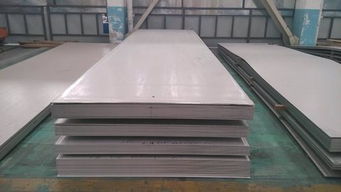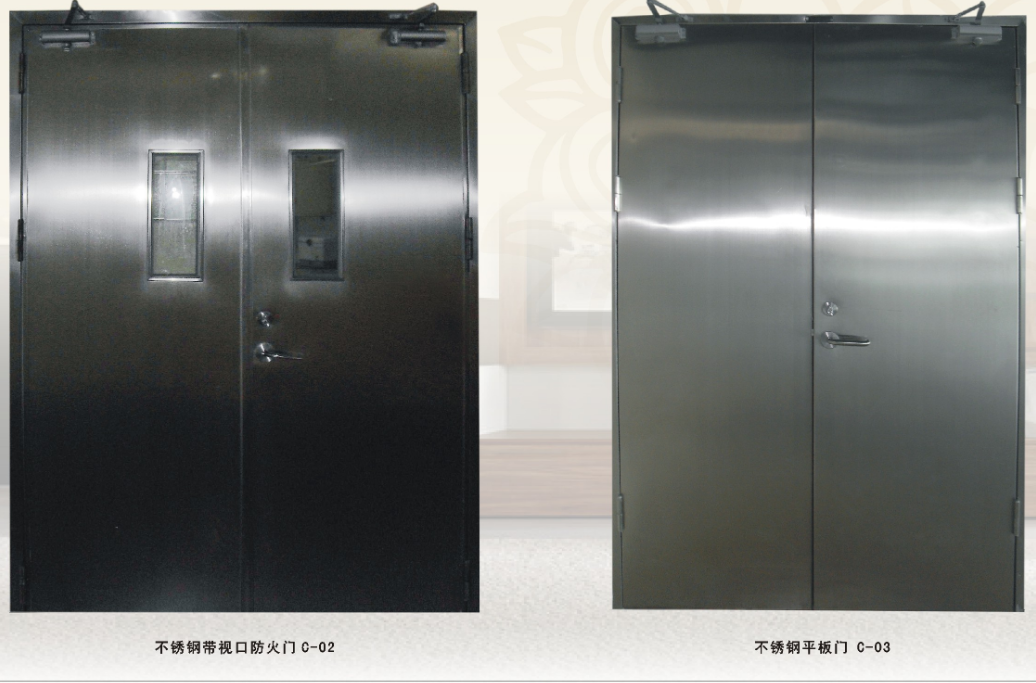- Introduction to Fire Resistance Stainless Steel
- Properties of High-Temperature Stainless Steel
- Applications of Fire Fireproof stainless steel in Fire Doors
- Compliance with Industry Standards
- The Advantages of Using Fireproof stainless steel
- Fire Safety Materials in Fire Door Manufacturing
- Classification and Characteristics of Stainless Steel and Heat-Resistant Steel
- Conclusion
Introduction to Fire Resistance Stainless Steel

Fire resistance stainless steel is a specialized material designed to withstand extreme temperatures and corrosive environments. As a leading fire door manufacturer, Guangdun Door Industry Co., Ltd. utilizes high-temperature stainless steel in our products, ensuring superior fire protection and durability.Stainless steel is a general term for alloy steels that are resistant to corrosion by air, water, acid, alkali, salt and its solutions and other corrosive media and have high chemical stability.Heat-resistant steel is a general term for oxidation-resistant steel and heat-resistant steel. Steels with good oxidation resistance and certain strength at high temperatures are called oxidation-resistant steels; steels with certain oxidation resistance and higher strength at high temperatures are called heat-resistant steels.Generally speaking, the working temperature of heat-resistant steel should exceed 300~350℃.
Stainless steel and heat-resistant steel use the same grades, which are easy to confuse.
Properties of High-Temperature Stainless Steel
High-temperature stainless steel is engineered for applications where maximum temperature resistance is essential. With a continuous use temperature reaching up to 1080°C without oxidation or deformation, our stainless steel meets the rigorous demands of industries such as petrochemical, pharmaceuticals, and nuclear power. This durability significantly exceeds that of traditional materials, providing a lifespan up to five times longer than centrifugal casting pipes.
Applications of Fire Fireproof stainless steel in Fire Doors

Our fire doors are manufactured using fire resistance stainless steel, particularly grades like 321 and 347. These alloys maintain excellent resistance to intergranular corrosion even in temperatures between 427-816°C. Their high mechanical performance, including superior creep strength, makes them ideal for long-term operations in high-temperature environments.
Stainless steel fire doors are specifically designed to offer enhanced protection against fire hazards. Constructed from high-quality fire resistance stainless steel, these doors provide a robust barrier that not only withstands high temperatures but also resists corrosion and wear over time. Our stainless steel fire doors are available in various designs and sizes, making them suitable for both industrial and commercial applications. Their aesthetic appeal, combined with exceptional fire performance, makes them a popular choice for modern building designs.
Compliance with Industry Standards
Guangdun’s fire doors are rigorously tested to comply with national and international standards, including GB12955-2008 for fire doors. Our products also adhere to the CNCA-C18-02:2014 and CCCF-HZFH-02 regulations, ensuring that our fire doors not only provide effective fire resistance but also meet the stringent safety requirements of various industries.
The Advantages of Using Fireproof stainless steel
Choosing fire resistance stainless steel for fire door manufacturing presents several advantages:
- Enhanced Fire Protection: The materials’ ability to withstand extreme temperatures ensures the integrity of the door in fire conditions.
- Corrosion Resistance: Our stainless steel products are resistant to chloride corrosion, extending their usability in diverse environments.
- Cost-Effective Solutions: With prices significantly lower than imported counterparts, our domestic stainless steel solutions offer unparalleled value.
- Versatile Applications: From industrial facilities to residential buildings, fire resistance stainless steel is suitable for a wide range of applications.
Fire Safety Materials in Fire Door Manufacturing
In addition to fire resistance stainless steel, fire safety materials play a crucial role in the effectiveness of fire doors. These materials are designed to prevent the spread of fire and smoke, providing critical time for occupants to evacuate. By integrating fire safety materials such as intumescent seals and fire-rated glazing, our fire doors enhance overall safety and compliance with fire regulations.
Here’s a descriptive section on the classification of stainless steel and heat-resistant steel, focusing on “Fire Resistance Stainless Steel”:
Classification and Characteristics of Stainless Steel and Heat-Resistant Steel
Classification of S Fire Resistance Stainless Steel and Heat-Resistant Steel
1. Classification by Chemical Composition
- Chromium Stainless Steel (Cr ≥ 12%): Includes grades like Cr13 and Cr17, known for their basic corrosion resistance.
- Chromium-Nickel Stainless Steel: This type includes nickel to enhance corrosion resistance, weldability, and cold workability. Examples include 1Cr18Ni9Ti and 1Cr18Ni12Mo3Ti.
- Chromium-Manganese-Nitrogen Stainless Steel: Contains chromium, manganese, and nitrogen without nickel, such as Cr17Mn13Mo2N.
2. Classification by Application
- Stainless Steel for Atmospheric and Corrosive Environments: Typically operates at temperatures not exceeding 500°C, requiring good corrosion resistance without high strength. This includes series such as Cr13 stainless steel and low-carbon Cr-Ni steels (e.g., 0Cr19Ni9, 1Cr18Ni9Ti).
- Heat-Stable Steel: Exhibits excellent oxidation resistance at high temperatures, generally ranging from 900°C to 1100°C. Common examples include high chromium steels (like 1Cr17 and 1Cr25Si2) and chromium-nickel steels (such as 2Cr25Ni20).
- Heat-Strength Steel: Must possess both oxidation resistance and high-temperature strength, operating effectively between 600°C and 800°C. Typical materials include chromium-nickel austenitic steels (like 1Cr18Ni9Ti and 4Cr25Ni20).
3. Classification by Microstructure After Air Cooling
- Austenitic Steel: This is the most widely used category, divided into the 18-8 series (like 0Cr19Ni9 and 1Cr18Ni9Ti) and the 25-20 series (such as 2Cr25Ni20Si2). They are commonly supplied in solution-treated states. This category also includes precipitation-hardened steels like 0Cr17Ni4CuNb (17-4PH).
- Ferritic Steel: Contains 17% to 30% chromium and is primarily used as heat-resistant and corrosion-resistant steel, with examples such as 1Cr17 and 00Cr30Mo2. Ferritic steels are typically supplied in annealed states.
- Martensitic Steel: Exemplified by the Cr13 series (such as 1Cr13 and 2Cr13), these steels are known for their heat treatment sensitivity, impacting mechanical properties significantly.
- Duplex Stainless Steel: Comprising 40% to 60% austenite and 60% to 40% ferrite, these steels exhibit exceptional corrosion resistance. Notable examples include 00Cr18Ni5Mo3Si2 and 00Cr22Ni5Mo3N. They are characterized by higher chromium content and lower nickel compared to 18-8 steels.
Thermal-Physical Properties of Stainless Steel
The thermal properties of stainless steel vary significantly based on alloy composition. Increased alloy content typically results in lower thermal conductivity and higher linear expansion coefficients. Austenitic stainless steels have higher expansion coefficients, which can lead to significant welding distortions, especially when welding dissimilar steels.
In contrast, non-austenitic steels exhibit magnetic properties, while certain austenitic grades, such as 18-8, are non-magnetic in annealed states but may show magnetism under cold working conditions.
Conclusion
In conclusion, Fireproof stainless steel is an essential component in the manufacture of reliable fire doors. Guangdun Door Industry Co., Ltd. is committed to providing high-quality products that ensure safety and performance. With our expertise and dedication to quality, we aim to set the standard in fire protection materials globally.

Although the output speed has slowed down, the quality always impresses me